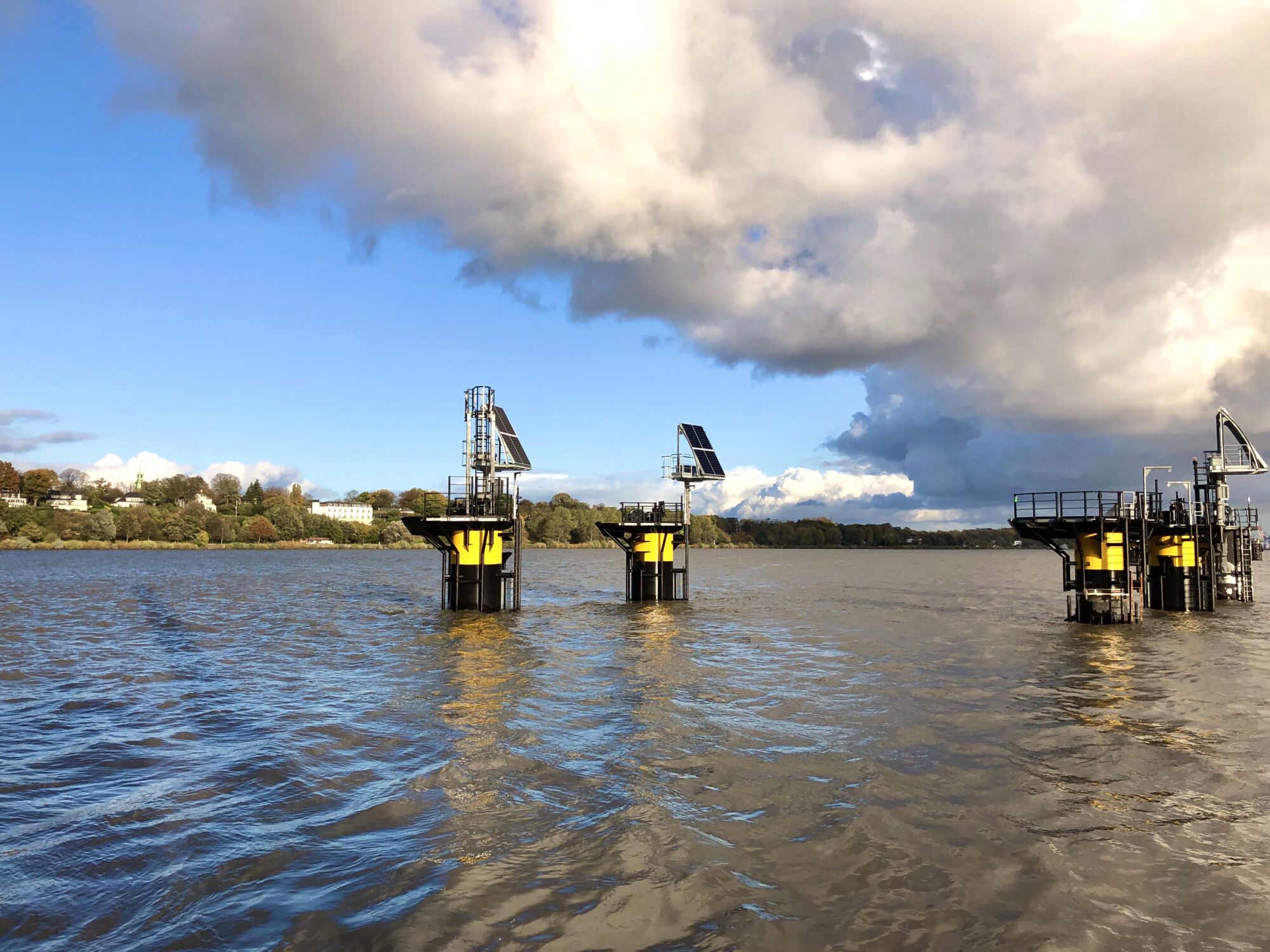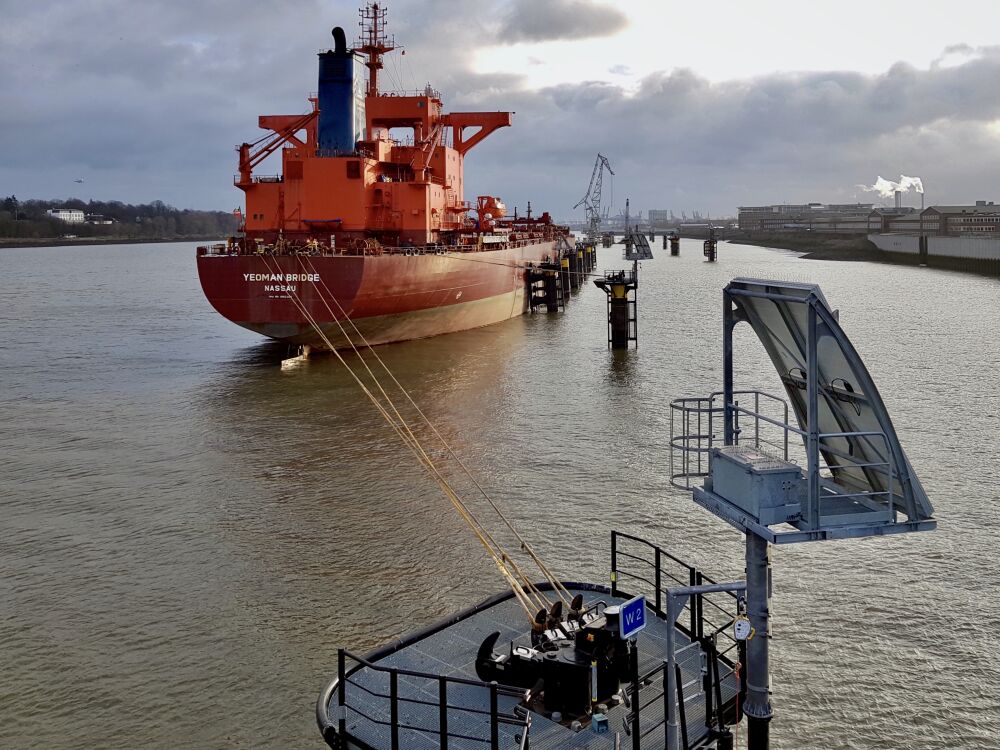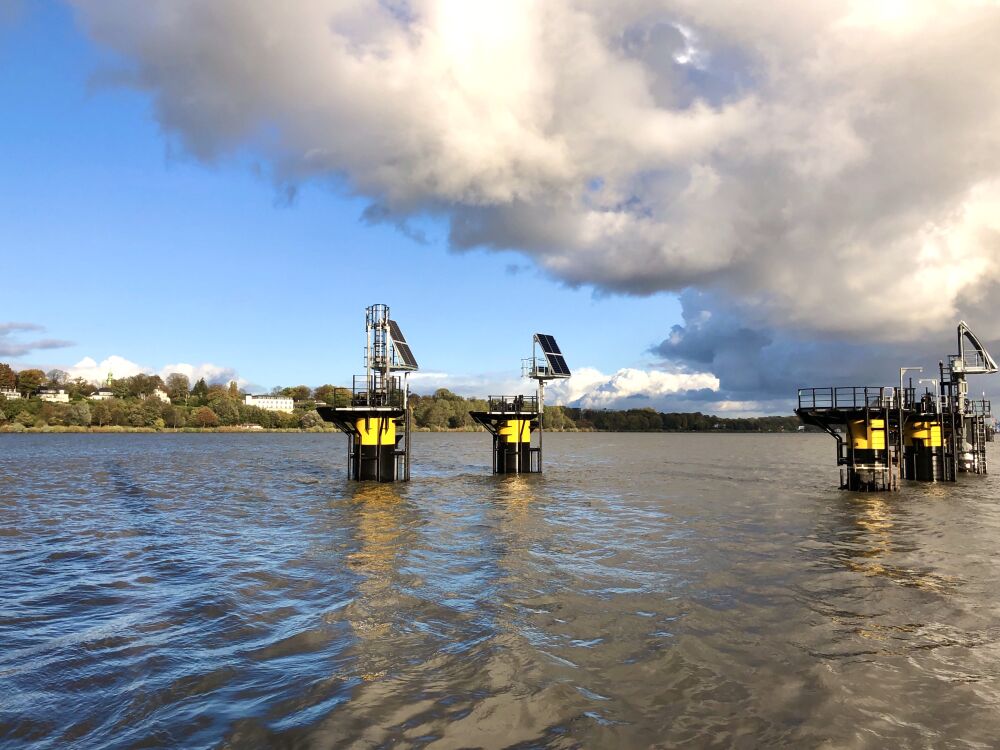
Press release: Green berthing area for Port of Hamburg
A newly-built berthing area in the Elbe River is powered by nineteen solar panels. The panels provide power to quick-release mooring hook units with integrated capstans. Following the Port of Rotterdam, the Port of Hamburg is the second major port to opt for this sustainable solution.

The solar panels might be the first thing to catch the eye. But the innovation of these solar-powered mooring systems, built by Dutch maritime innovator Straatman BV, lies beneath the surface of the water. Traditional solutions depend on underwater power cables. The challenges are well-known. The installation of the cables is a time-consuming, costly and high-risk operation. Moreover, it is not uncommon for the power lines to be damaged by anchors or during dredging activities. Equipment that is (unexpectedly) out of order can compromise the safety of mooring operations and repairing the damaged lines involves the same costs and risks of installing the cables.
Solar-powered solutions seek to avoid these issues by removing the need for underwater cables altogether. By doing so, the lead time for the construction of dolphins and berths is reduced. Maintenance costs are low, as has been proven in the Port of Rotterdam. And of course, using solar energy reduces energy costs and fits within a vision of sustainability. Hamburg’s port authority also cited reliability as an important factor in their choice. These benefits in the construction and operation of mooring dolphins have not gone unrecognised. The solar-powered mooring systems have won the IHS Port Innovation award and have been listed #1 in the ‘Sexy top 5’ of Maritiem Nederland.

Technical Details
The ‘solar systems’ provide power to capstans as well as working lights in order to guarantee safe berthing. The dolphins are equipped with triple and quadruple 125 and 150 ton quick release hooks, also supplied by Straatman. Using LoRa technology, essential system details are shared, including available power, energy consumption, battery quality and a log of the capstan use. This allows the Port of Hamburg to monitor the status of the mooring systems in a web app and plan just-in-time preventative maintenance.
Development
The idea for sustainable, solar-powered mooring dolphins was first conceived in 2013. Straatman received an informal request from a main port authority to investigate the possibility of powering capstans without power cables, in particular for dolphins located in open water. Though wind was also considered as a possible energy source, Straatman concluded the sun to be more reliable and stable. In close cooperation with the port authority and strategic partners, the Dutch company developed a design based on solar panels and battery packs. After a pilot project in 2014, the design was further optimised for installation and its size was reduced. Working lights and navigations lights were also integrated. This second generation of the design was then ordered by the Port of Rotterdam.

Berthing Area Realisation
Hamburg’s new berthing area was completed in the last quarter of 2019. It serves as a waiting area for vessels with a deep draft that depend on the tide to enter the Port of Hamburg. The berthing area was realised by the Arbeitsgemeinschaft GSWP Finkenwerder joint venture, which consists of the companies F+Z Baugesellschaft (technical leader of the joint venture), AUG. PRIEN Bauunternehmung and Taucher Knoth from Hamburg in Germany.
Sustainable Ports
According to Straatman, there are many possibilities for ports to become more sustainable. The Dutch company has the ambition to implement its solar powered mooring systems at ports across the globe. More information is available at their website: https://mfstraatman.com/en/solar-systems
Do you want to know more about our services and products?
Please contact us, we will tell you more about it! Fill in your details below. We aim to give you a response within one working day.
Would you prefer to speak to someone directly?
Our product specialists are ready for you every working day.
